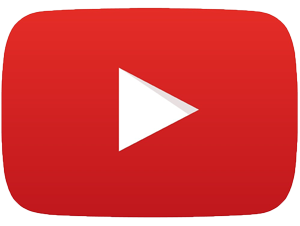Getting the Most Out of Your Website Analysis Tools

If you don’t know how to use website analysis tools, you’re missing out on opportunities to substantially increase traffic to your website.
Today, we turn to search engines for the answer to everything. Need to buy something? Search for nearby stores with that product. Can’t remember when clocks change for Daylight Savings? No problem, search it (FYI: It’s this Sunday, I Googled it.). Search engines are so frequently used, terms related to searching have now become new verbs—yes, Googled is now a verb. Search engines are the upgraded magic 8 balls of the web, providing us with an answer to anything we type in that search bar. Because we rely on them so heavily for everything, knowing how to use them to get your content exposure is crucial.
There are numerous website analysis tools out there to help you understand your site’s performance, and how to better utilize search engine optimization. But if you don’t know how to use or understand these tools, they’re not helping you. Website analysis tools don’t do the work for you, they just give you the data and information you need to create success for yourself.
Not sure what you’re looking at? Don’t panic; this post will cover the basics of understanding and using analysis tools to gauge your website’s performance. By the end of the article, you’ll have a better understand of what to look for, and how to act upon it.
Using Website Analysis Tools to Monitor SEO Performance
Google Analytics is the tool-of-choice for this crash course. It’s a brilliant tool, so long as you know what you’re looking at. Analysis tools are going to give you all sorts of information and data about your site: audience statistics, acquisition information (today’s subject), behavior—the list goes on. Acquisition covers your sites traffic, how they got there, what keywords brought them there, etc.
Your analysis tool should have a section for search engine optimization (SEO). There, you will be able to view the following:
- Queries shows detailed information on which search queries resulted in your site being seen or click on in the search results.
- Landing pages shows which pages of your site people most frequently enter your site on.
- Geographical summary will show data related to where the people who see and click on your site links in search engine results are from. We won’t visit this in detail as it’s very basic; just where your views and clicks are coming from.
These three SEO analysis categories are important for understand who is looking at which of your site’s pages, from what geographical location.
Using this Information Wisely
Now that you know what you’re looking at, it’s time to learn how to use it to understand how your site is performing from the website analysis tools standpoint. Each category has uses the following measurements to assess your site’s performance:
- Impressions: How many people see your site in the search results for that category.
- Clicks: How many people actually click on your site in the search results for that category.
- Average Position (Queries & Landing Page only): How far down in the search results your site is for that category.
- CTR (click-through rate): This is a percentage calculated by dividing the clicks by the impressions (x100).
We’ll pretend you own a candy corn factory (’tis the season), and you have a website to increase exposure and attract customers. For queries, you see the #1 search query listed is “candy corn factory”, for which you have 20,000 impressions, 5,000 clicks, an average position of 15, and a CTR of 25%. That means out of 20,000 people that see your site listed in the search results when they search “candy corn factory”, only 5,000 people actually clicked on your site, which means 25% of people see your link and click on it when searching that query.
If you’re average position for that query is 17, that means your site is the 17th search result—which is not on the front page. Most people don’t look beyond the front page of search results, so you want a low number for your average position. The higher your site is in the search results, the more likely it is to be viewed.
With landing pages, you’re seeing this information again, but instead of queries, it’s ranking the URLs which people click to land on your site. This gives you an idea of which pages on your site are seen the most, clicked on the most in search results (bringing them to your site), and their position. If your top landing page is www.candycornrocks.com/buy-it-now, you know most views and clicks were out of interest of buying massive bags of candy corn.
Still Don’t Have a Clue?
Leave it to Adventure Web, the website design & SEO experts. And what do experts do? They write a book to share their knowledge. In our case, it’s an eBook; a free eBook, at that. Our Ultimate Guide to Redesigning Your Website covers website analysis tools, how to decipher and utilize SEO, and a whole lot more you should know about your website—including when it’s time to redesign.
Subscribe to our blog to continue to learn more about the most important components of website design and social media management.


















